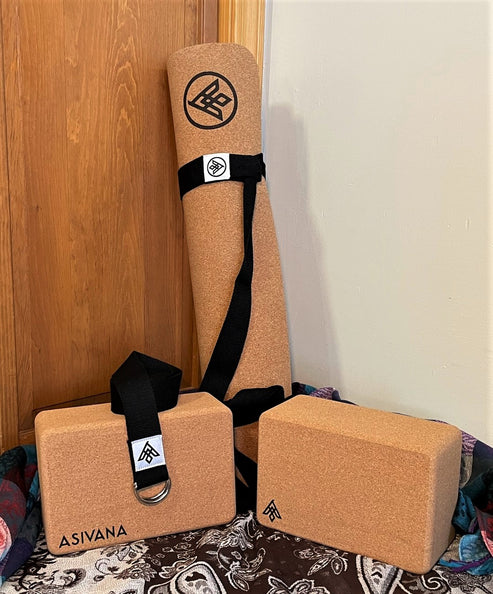What is Mudra Yoga?
Jack UtermoehlShare
Mudra yoga is a subtle and powerful limb of yoga practice that uses symbolic hand gestures—known as mudras—to direct and seal the flow of energy (prana) throughout the body.
These energetic seals influence all layers of being, or koshas, including the physical, mental, and subtle energetic bodies. The term “mudra” is Sanskrit for “seal,” “gesture,” or “mark.”
In a traditional context, mudras are not just hand gestures; they are spiritual tools used in Hindu rituals, Vedic texts, Upanishads, and Tantric traditions. They are also foundational within yogic and meditation systems for awakening higher consciousness and refining subtle energies.
When practiced with breath control (pranayama), concentration (dharana), and asanas (postures), mudras can shift inner states, enhance meditation, and promote overall well-being.
Origins of Mudra Yoga
The use of mudras dates back thousands of years and is rooted in yogic philosophy and Indian spiritual practice. References can be found in scriptures across Hinduism, Buddhism, and Jainism.
They are featured in ancient yogic texts such as the Hatha Yoga Pradipika, Gheranda Samhita, and various Tantric writings.
The practice of Mudra yoga is grounded in the understanding that prana (life force) can be consciously directed to awaken dormant energy centers and regulate the flow of energy through the nadis (energy channels) and chakras (energy centers).
It is often integrated within Hatha, Kriya, Raja, and Tantra Yoga traditions.
Yoga Essentials for Your Practice
Support your yoga journey with high-quality, sustainable props designed for comfort and stability.

Crafted from eco-friendly cork for durability and a comfortable practice.
$24
Shop Now
Includes everything you need to get started: a mat, blocks, and a yoga strap.
$120
Shop NowMudra Yoga Practice
Mudra yoga involves holding specific gestures with the hands—sometimes for several minutes—to channel energy for a particular physical, mental, or spiritual effect.
The gestures are often performed while seated in meditation, integrated into pranayama exercises, or used in stillness during asanas.
Common Mudras
- Jnana Mudra (Mudra of Knowledge): Enhances clarity, awareness, and concentration. The tip of the thumb touches the tip of the index finger.
- Prana Mudra (Mudra of Life): Boosts vitality and activates the root chakra. Thumb joins with the ring and little fingers.
- Apana Mudra: Supports detoxification and grounding. The thumb touches the middle and ring fingers.
- Surya Mudra: Stimulates metabolism and energizes. The ring finger folds under the thumb.
- Dhyana Mudra: Cultivates inner peace. Hands rest in the lap with right hand over left and thumbs touching.
Common Poses Integrating Mudras
- Seated Meditation (Sukhasana or Padmasana): Combined with jnana or dhyana mudra for meditation enhancement.
- Mountain Pose (Tadasana): Paired with surya mudra to focus and energize.
- Child’s Pose (Balasana): Enhanced with prana mudra for grounding and recharge.
- Warrior II (Virabhadrasana II): Used with prana or apana mudra to channel power and expansion.
Pranayama Practices with Mudras
- Nadi Shodhana (Alternate Nostril Breathing): Practiced with Vishnu mudra using the thumb and ring finger to alternate nostrils.
- Bee Breath (Bhramari): Practiced with shanmukhi mudra—hands used to close the ears and eyes to deepen internal awareness.
Mudra Yoga Suitability
Experience Level: Mixed Level (Suitable for All)
Physical Demand: Gentle Movement
Mind-Body Engagement: Balanced Mind-Body
Adaptability: Highly Adaptable
Focus Area: Energy Flow, Mental Clarity, and Spiritual Growth
Notes on Mudra Yoga
Practicing mudra yoga consistently can lead to subtle shifts in energy, greater mental clarity, emotional stability, and spiritual depth.
Each mudra acts like a key, unlocking potential states of consciousness or supporting specific healing pathways.
It is a system of refinement—of both the body and the inner landscape.
Similar Styles
Hatha Yoga, Kundalini Yoga, Raja Yoga, Kriya Yoga, Tantra Yoga, Hasta Yoga
Equipment
Required: None
Nice to Have: Meditation Cushion
Optional: Yoga Mat, Yoga Blocks, Blanket









